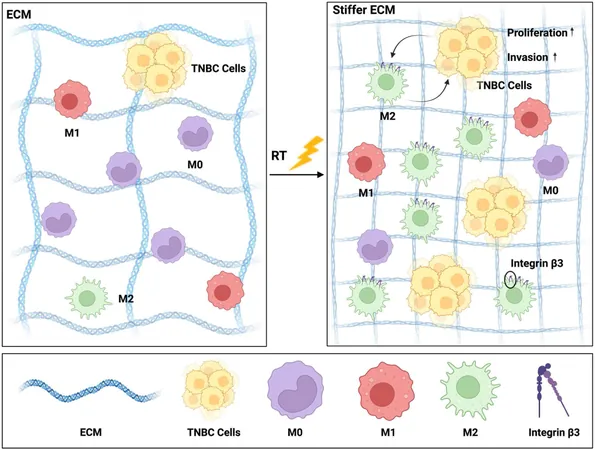
Unlocking the Secret of Purple Tea: Genetic Breakthroughs May Lead to Super Health Benefits!
2024-11-21
Author: Ming
Introduction
Purple tea, a remarkable product of nature's evolution, offers a treasure trove of health benefits, thanks to its high anthocyanin content. These powerful compounds are celebrated for their antioxidant, anti-inflammatory, and anti-aging properties, making purple tea a game-changer in the world of wellness beverages. Unlike its traditional green counterpart, this vibrant brew is gaining traction for its potential to enhance metabolic health and provide robust disease prevention.
Research Breakthroughs
However, researchers have faced significant hurdles in understanding the complex genetic mechanisms that guide anthocyanin accumulation in purple tea. Earlier studies often focused narrowly on single cultivars, limiting our understanding of the broader genetic landscape. Recognizing this gap, a team from the Chinese Academy of Agricultural Sciences took a giant leap forward, conducting extensive genetic research that was published on July 10, 2024, in Horticulture Research.
Genomic Technologies
Employing cutting-edge genomic technologies such as RNA-seq, BSA-seq, and BSR-seq, the researchers analyzed a hybrid tea population derived from two distinct types: "Zijuan" (purple leaves) and "Jinxuan" (green leaves). Their findings brought to light crucial genes, such as CsMYB75 and CsANS, which play vital roles in the biosynthesis of anthocyanins. The study not only identified key mutations that regulate pigment accumulation and leaf color but also highlighted the importance of genetic diversity in maximizing the health benefits of purple tea.
Findings of the Study
By examining 30 individuals from the hybrid tea population, the team utilized high-throughput sequencing techniques that revealed 459 differentially expressed genes (DEGs). Noteworthy structural genes like CHS, F3H, and ANS showed significantly higher expression in purple leaves, driving the production of anthocyanins. A groundbreaking moment in their research was the identification of the transcription factor CsMYB75; silencing this gene led to a dramatic drop in anthocyanin levels.
Mutation Discovery
The discovery of a 181-bp InDel mutation in the CsMYB75 promoter was particularly exciting, as it was linked to increased expression in purple tea. The researchers also pointed to other genes like GST, MATE, and ABCC, which are involved in the transport of anthocyanins, adding layers of complexity to their findings. Utilizing BSA-seq and BSR-seq methods, they pinpointed SNP and InDel mutations on chromosomes 2 and 14 that correspond to purple leaf traits, paving the way for future breeding programs focused on high-anthocyanin tea varieties.
Expert Insights
Liang Chen, the senior author of the study, stated, "Our research provides a critical leap in understanding the genetic drivers of anthocyanin accumulation in purple tea. Identifying CsMYB75 and its associated mutations marks a substantial step forward, laying a foundation for developing new tea cultivars with amplified health benefits. These genetic markers open up opportunities to breed varieties with higher anthocyanin content, meeting the rising consumer demand for health-promoting beverages."
Broader Implications
The implications of this research extend beyond academic exploration. These identified genetic markers could significantly accelerate breeding initiatives for purple tea cultivars with elevated levels of anthocyanins, catering to an increasingly health-conscious global market. As demand rises for functional health drinks, new tea varieties may not only deliver natural antioxidants but also promote better metabolic health, anti-aging, and prevention against chronic diseases.
Future Directions
Furthermore, gaining a deeper insight into the mechanisms of anthocyanin biosynthesis could revolutionize agricultural biotechnology, leading to the cultivation of tea plants with optimized phytochemical profiles. This could transform the tea industry, boosting economic prospects while providing consumers with powerful, health-enhancing drinks that harness the full potential of nature's gifts.
Conclusion
Could purple tea be the next big thing in health beverages? Stay tuned as we watch this space for more breakthroughs on this colorful tea!





 Brasil (PT)
Brasil (PT)
 Canada (EN)
Canada (EN)
 Chile (ES)
Chile (ES)
 España (ES)
España (ES)
 France (FR)
France (FR)
 Hong Kong (EN)
Hong Kong (EN)
 Italia (IT)
Italia (IT)
 日本 (JA)
日本 (JA)
 Magyarország (HU)
Magyarország (HU)
 Norge (NO)
Norge (NO)
 Polska (PL)
Polska (PL)
 Schweiz (DE)
Schweiz (DE)
 Singapore (EN)
Singapore (EN)
 Sverige (SV)
Sverige (SV)
 Suomi (FI)
Suomi (FI)
 Türkiye (TR)
Türkiye (TR)